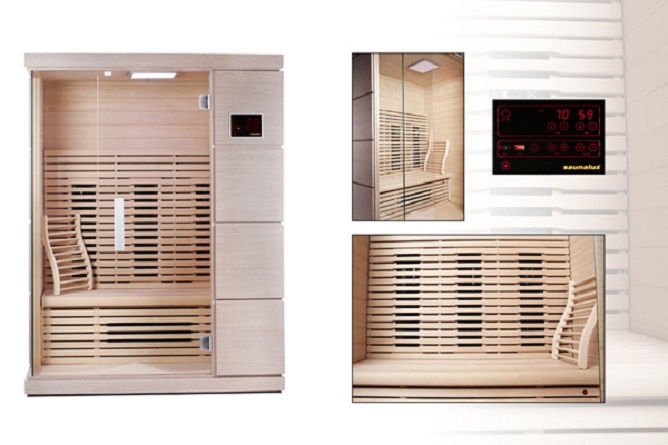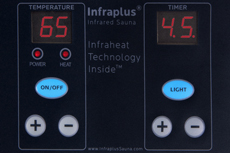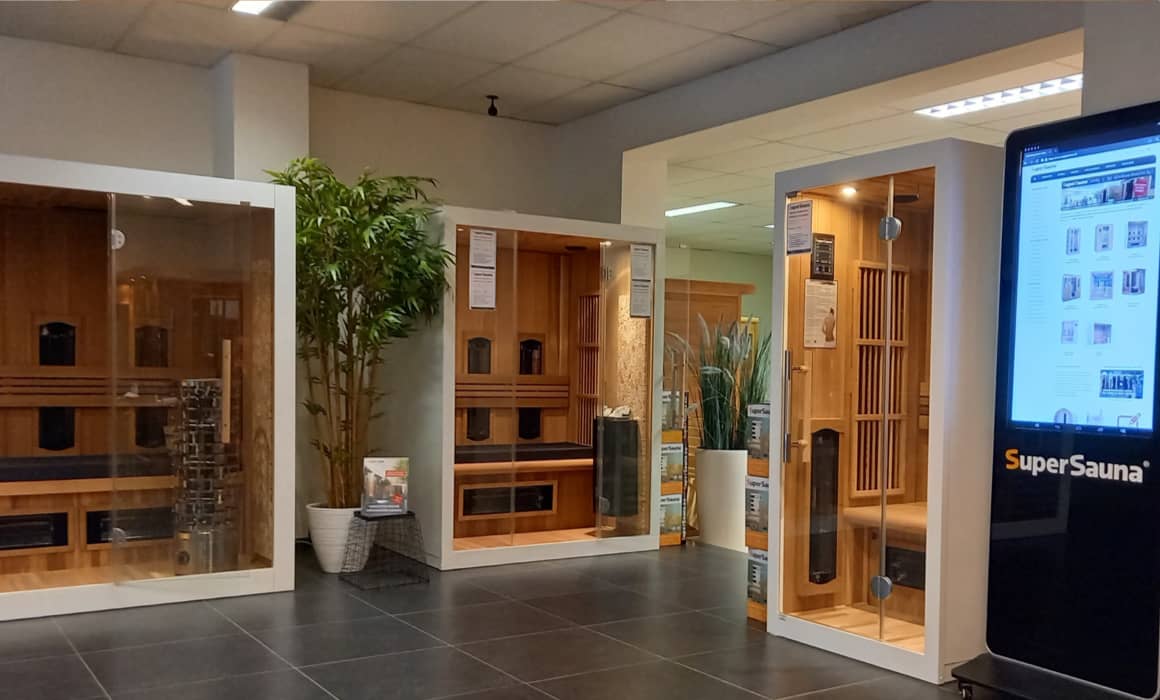Difference between infrared sauna and traditional sauna


Infrared sauna vs normal sauna
This article discusses the differences between a normal traditional sauna and the infrared cabin (also known as an infrared sauna). The differences covered include differences in temperature, heat transfer, heating time and use.


Difference in temperature
Many people think that using an infrared sauna is the same as using a traditional sauna. Yet there are important differences. With a traditional sauna, you always have to wait for the sauna to reach temperature. This temperature is actually always above 75 degrees. An infrared sauna can already be used at a much lower temperature. In fact, an infrared sauna can already be used at 30 degrees.
Warm-up time for traditional sauna and infrared cabin
The warm-up time of a traditional sauna is many times longer. This is because you must first wait for the traditional sauna to reach a high temperature. As a result, the warm-up time is usually around 40 minutes. An infrared sauna can be used at a much lower temperature because the infrared sauna provides direct heat on the skin. As a result, the warm-up time is only 5 - 10 minutes. One steps into the ir cabin at a much lower temperature, usually between 30 - 40 degrees. For many people, this is more comfortable because it allows one to slowly get used to the heat. During the infrared session, the temperature can rise to 60 - 70 degrees. However, this is not necessary, persons who have difficulty with that heat can also use an infrared sauna at a lower temperature.
Infrared and sauna consumption
An infrared cabin can almost always be connected to a normal 230-volt socket. The power is usually between 1500 watts and 2500 watts. This is comparable to the consumption of a hoover. The consumption of a session in an infrared sauna costs about 0.25 cents.
With a traditional sauna, the power consumption of the sauna depends heavily on its size. A guideline is that one needs 1 kw of power for 1 m3 of capacity. But at SuperSauna.co.uk they sell a number of larger models that can be connected to a normal socket. But in many cases, a traditional Finnish sauna requires 380 volts power. Check with your electrician whether this is possible in the room you intend to install the sauna.
Difference in heat transfer
In a traditional sauna, heat transfer is via hot air, this makes it important that the sauna is (and stays) really very hot while you are in it. A traditional sauna gets (depending on the type) between 75 - 100 degrees. An infrared sauna works completely differently, namely via infrared radiant heat. In an infrared sauna, heat is transferred through the infrared emitters. This allows you to use an ir sauna even at lower temperatures. It is even possible to leave the cabin door open with an infrared sauna. Thanks to the direct heat, an infrared cabin is very suitable for people suffering from muscle and joint pains such as rheumatism and arthrosis. The high temperature of a traditional sauna makes it more suitable for relaxing in.
Difference in sessions in both types
In a traditional sauna with stove, the aim is usually to undergo several sauna sessions at a time. The maximum duration of such a session is about 15 minutes. Between sessions, the aim is to cool down, this can be done, for example, via a cold footbath or cold shower.
With an infrared sauna, one takes only 1 session of about 30 minutes. This makes the infrared sauna faster and easier to use and does not take more time, as taking a hot bath.
Lying down in the sauna
Many people love to lie down in a traditional sauna. Bear in mind that you usually need to choose a larger model of sauna if you want to be able to lie in it, and that its capacity must therefore be greater to get the same temperature as a smaller model. A guideline here is that you need about 1 kw of power for every m3 of volume.
Many people wonder why there are so few infrared cabins for sale in which you can lie down. There is an obvious reason for this. If you lie down in an infrared cabin, you don't get infrared on your back. And the back is the most important place, because the infrared absorption is best at the back. In most three-person models (link three-person IR saunas) of the Infraplus Sauna brand, you can adopt a relaxed posture and still get the right amount of infrared on your back because this brand also has infrared heaters placed on the side, which treat the back, shoulders and neck well.
After the sauna session
After the sauna sessionAfter the session in a traditional sauna, the idea is to rinse off cold, unlike in infrared sauna where one should instead take a hot shower. After the session in an infrared sauna, it is best to take a rest and drink some water. A hot shower or bath is recommended with an infrared cabin.
Advantages of infrared cabin over traditional sauna
Very beneficial for muscle and joint pains, easy to use and easy to install are some of the advantages, which explain the popularity of the infrared cabin. More and more medical specialists such as rheumatologists recognise the beneficial effects of the infrared sauna. But an infrared sauna is also easy to use and maintain (link infrared sauna maintenance). The traditional sauna is also still popular, before one can proceed to purchase one should take a number of things into account. If you opt for a large sauna (e.g. 2 metres by 2 metres), most models require a 380-volt power supply. Exceptions to this rule can be found here link sauna on normal socket 230 volt. In addition, good ventilation is necessary. A traditional sauna is ideal for clearing your head and relaxing after a stressful day. A traditional sauna also helps you recover more quickly if you have a cold.





